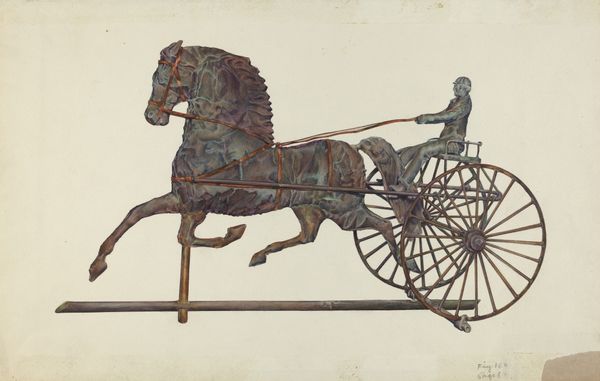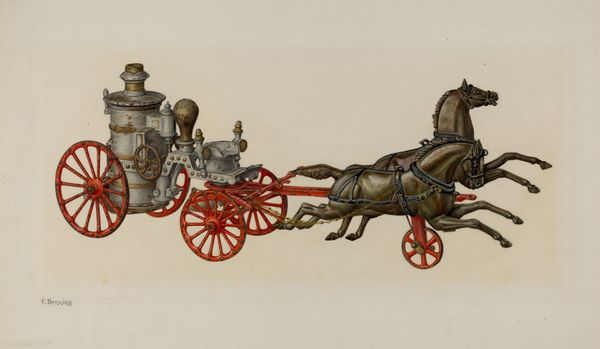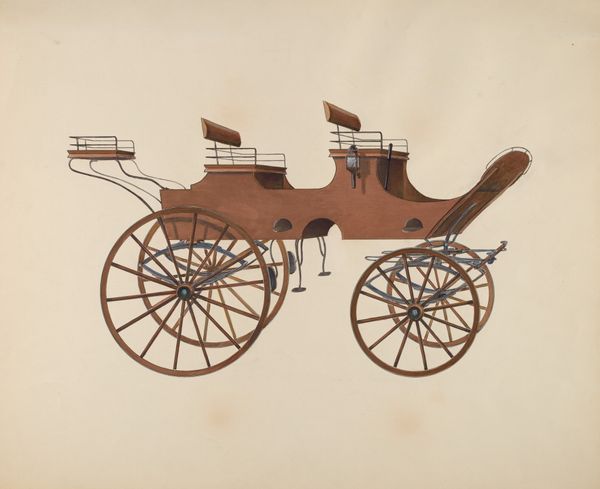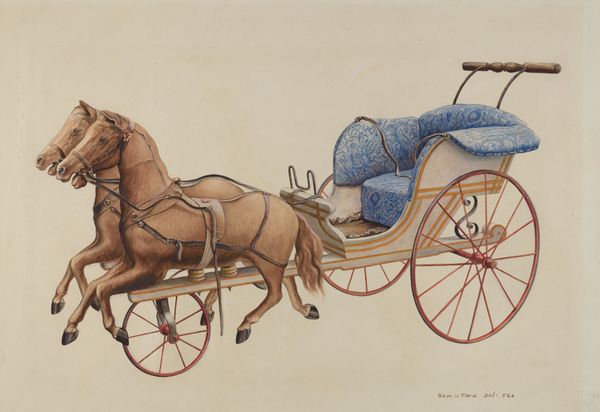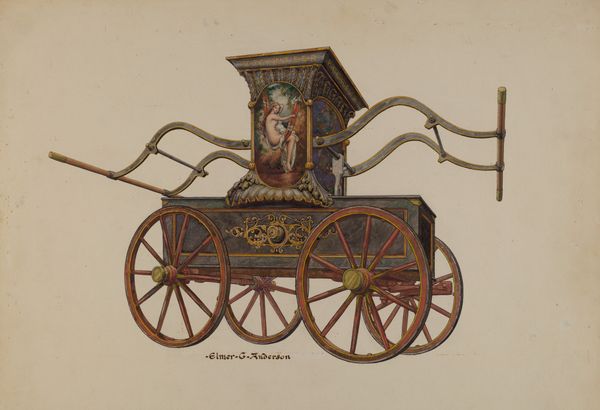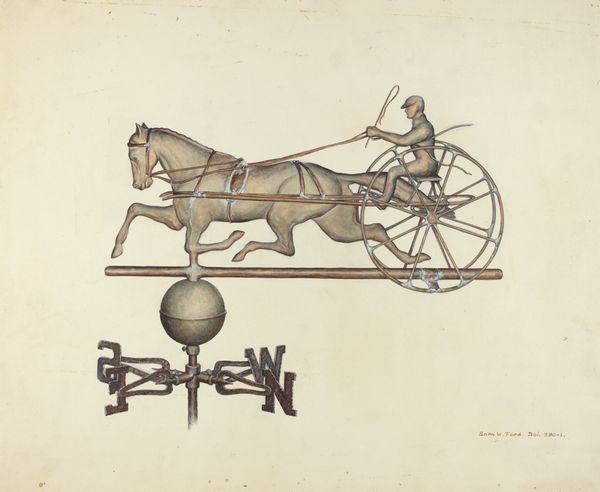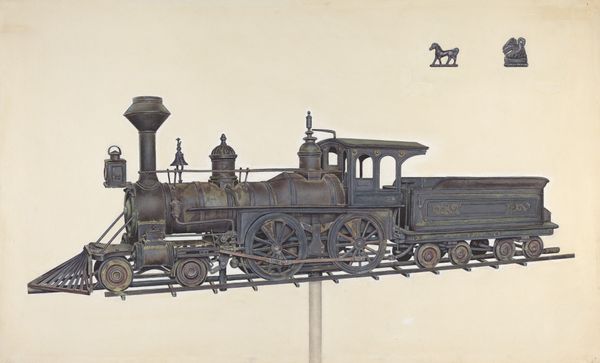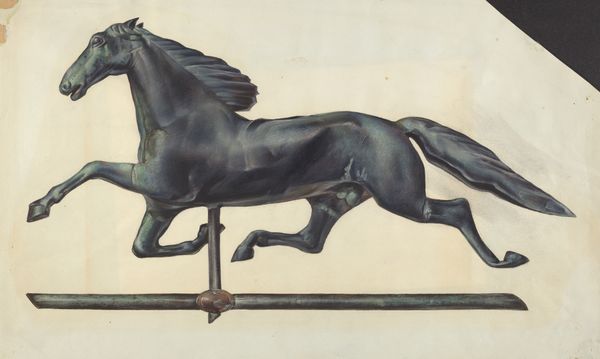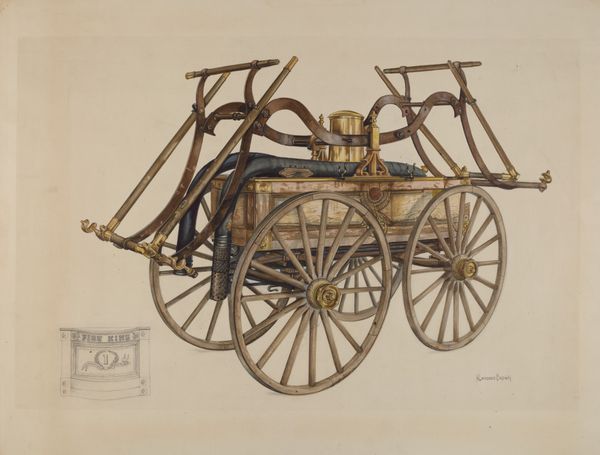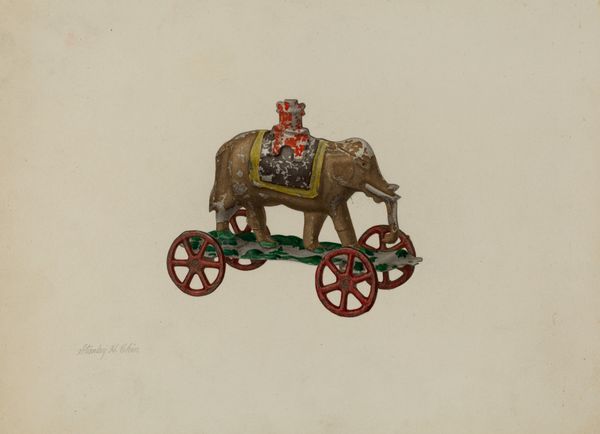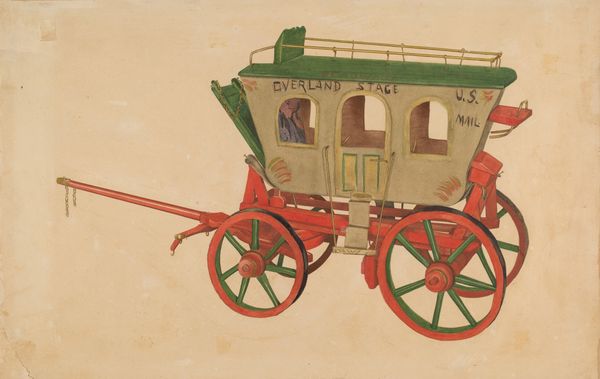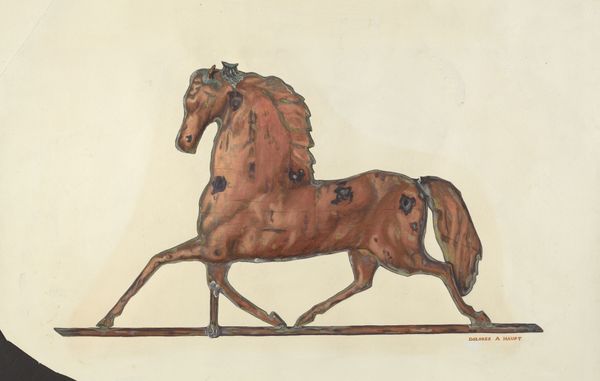
drawing, coloured-pencil, metal, sculpture
#
drawing
#
coloured-pencil
#
metal
#
coloured pencil
#
sculpture
#
watercolour illustration
Dimensions: overall: 45.5 x 73.3 cm (17 15/16 x 28 7/8 in.) Original IAD Object: 50" long
Copyright: National Gallery of Art: CC0 1.0
Curator: Look at this rather striking weathervane, dating back to around 1937, a sculptural model of a horse-drawn fire engine. The artist employed both metal and coloured pencil, creating a really unique mixed-media piece. Editor: My first impression is how charming it is. The piece manages to feel both robust and delicate, and is almost an illustration due to the heavy use of colour pencil over a presumably metallic surface. Curator: Indeed. If we break it down, the form and composition speak volumes. The dynamic arrangement of the horses pulling the engine communicates not just motion, but an urgent narrative of public service and civic responsibility. Observe the acute attention to detail in the wheel spokes and the layering of forms on the fire engine. It demonstrates remarkable visual acuity. Editor: Absolutely, but I also wonder about its original placement. A weather vane like this was meant to adorn a rooftop, signalling wind direction and perhaps hinting at the homeowner's livelihood, or aspirations. The choice of a fire engine, made from such industrial materials, speaks to a culture deeply invested in safety and technological advancement of fire control in mid-20th century. It’s the art of labour, quite literally, hoisted high for public display. Curator: An interesting interpretation. I tend to think the artistic focus rests on its symmetrical balance and symbolic representation. Consider how the curvilinear base mirrors the shapes within the horses and the equipment of the carriage itself, presenting a structured unity. Editor: While that is undoubtedly an element, don't you find the use of metallic elements is inherently intertwined with notions of production? The weathervane embodies the ethos of the era: efficiency, mechanics, and the industrial processes central to both art making and firefighting. Curator: That intersection definitely exists, adding layers to our interpretation of its symbolic value. It's a conversation between art and everyday life—the aesthetic and the functional merging in this single object. Editor: It gives us a tangible connection to the past. Examining it now makes one appreciate how materiality embeds history within an object meant to face the elements and time itself.
Comments
No comments
Be the first to comment and join the conversation on the ultimate creative platform.
